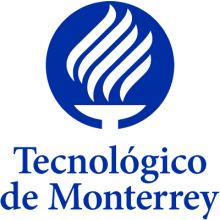CETYS Universidad in Baja California, Mexico has a target of 5 per cent of its students to come from outside the country. But in reality, it has already far surpassed this goal thanks to what its rector calls a “special breed” of international student.
With campuses in Mexicali and Tijuana, CETYS is just minutes from the US border and its rector, Fernando León García, said students based in nearby San Diego were increasingly opting to live in one country but study in another.
They are attracted by the competitive tuition fees and CETYS’ accreditation in the US, which means that they can access loans from the US State Department as well as the university’s own scholarships.
But also, according to Dr León García, students have seen a chance in Mexico to access employment and other opportunities that might be inaccessible in the hypercompetitive world of US universities.
Beyond the day trippers, CETYS is one of several Mexican universities looking to expand their global reach, attracting both students and faculty from overseas.
At the Monterrey Institute of Technology (“Tec”), 500 international students will start this year out of a cohort of 12,000, and the institution is aiming to double this in the years ahead.
Two engineering degrees will soon be taught entirely in English with a view to targeting students from the US primarily but also from Asia and the Middle East.
“We used to see ourselves as a Mexican institution for Mexicans with a global vision,” said Tec’s rector for higher education, Juan Pablo Murra. “We always had this international mind, but now we want international students and for the world to see Tec as a global player. It is a shift in mindset that is going to take us some time, but we are heading in that direction.”
Such aims have been boosted by the US’ renewed interest in Mexico after its retreat from China, with a “nearshoring” boom that has seen several major companies set up factories.
Tec has a longstanding aim of attracting top international academic talent, and it is the chance to shape such seismic economic events – and enjoy access to business leaders and government officials that would be very difficult in the US – that is convincing them to join, according to Professor Murra.
Not that it is always an easy sell. “If you ask a top-notch academic from around the world where they think they can have a good, productive, relevant career, Mexico might not be top of their minds,” he admitted.
Often, therefore, recruitment had to be on a “one-by-one” basis, involving bringing the candidate to Tec’s sprawling campus in affluent Monterrey to show them that promises about their work having an impact are “real”, he said.
As salaries in Mexico still lagged behind other sectors, the country had to work hard to “sell the perks of being here”, agreed Arturo Reyes-Sandoval, the general director of the National Polytechnic Institute, which – unlike Tec and CETYS – is a public institution.
In his own mission to attract overseas talent, Professor Reyes-Sandoval said, he has had to ensure that practices in Mexico match what an academic might expect elsewhere.
“When I first arrived, I noticed that our professors were paying to publish their own publications, so one of the first things I did was to create a budget for the university to cover these costs,” he said.
At CETYS, efforts to increase the number of staff with PhDs from a low of just 20 per cent to more than 70 per cent had had the knock-on effect of giving them a global mindset, according to Dr León García.
“The reality in Latin America is that there are not enough places to pursue doctoral training, so we established individual and institutional partnerships to allow our staff to pursue studies abroad. In doing so, many came into contact with foreign professors and established their own international networks,” he said.
Dr León García said that CETYS had invested several million dollars in trying to bring professors from abroad in the hope that they would continue the process of improving the overall level of teaching and research by sharing their skills and expertise with existing staff.
This had successfully attracted talent from Asia, Europe and the US as well as other countries in South America, he said.
CETYS also wants professors who are prepared to come to teach a course or collaborate on a research project, if they do not want to commit to working for the institution full-time.
These efforts had been progressing with little help from the federal government of Andrés Manuel López Obrador, Dr León García said, which claimed to be in favour of internationalisation but often pursued policies that inhibit it.
“Whatever we are doing, it is because we have chosen to do it. It could be a lot better if the federal government was a little bit more supportive,” he added.
Register to continue
Why register?
- Registration is free and only takes a moment
- Once registered, you can read 3 articles a month
- Sign up for our newsletter
Subscribe
Or subscribe for unlimited access to:
- Unlimited access to news, views, insights & reviews
- Digital editions
- Digital access to THE’s university and college rankings analysis
Already registered or a current subscriber? Login










